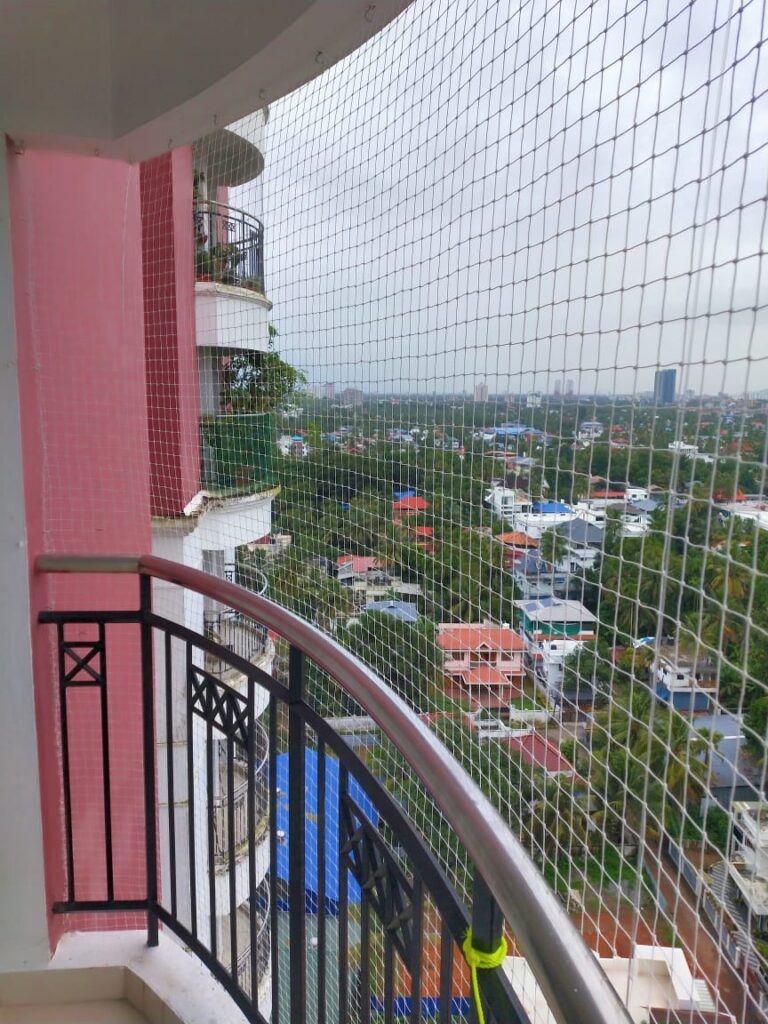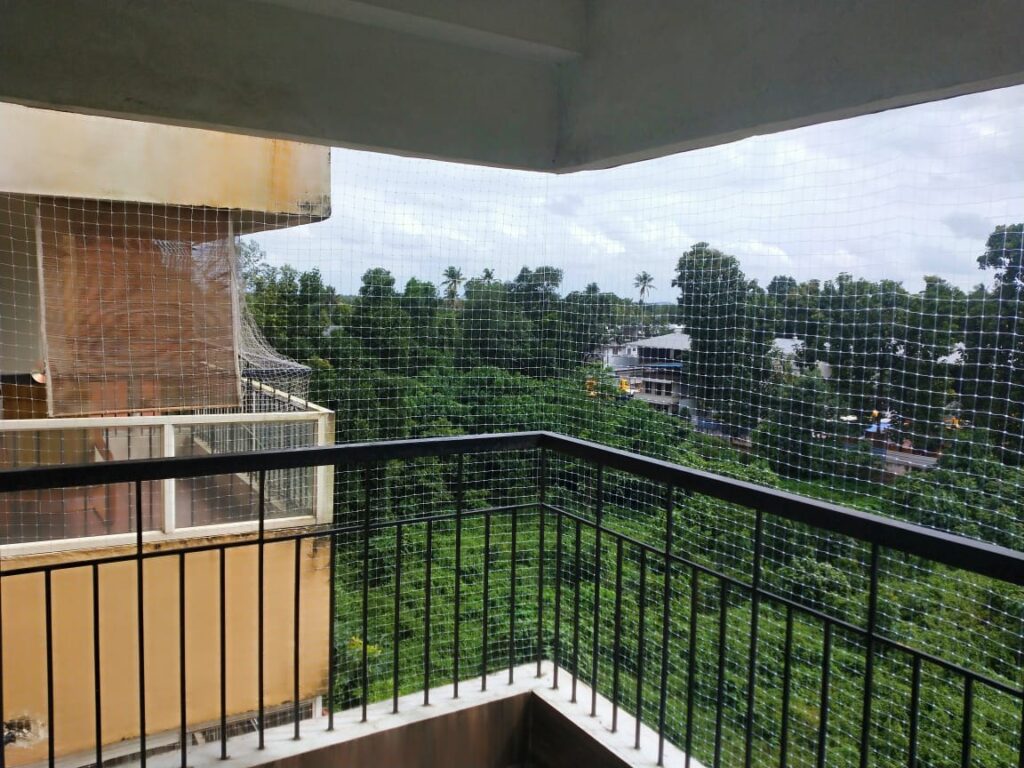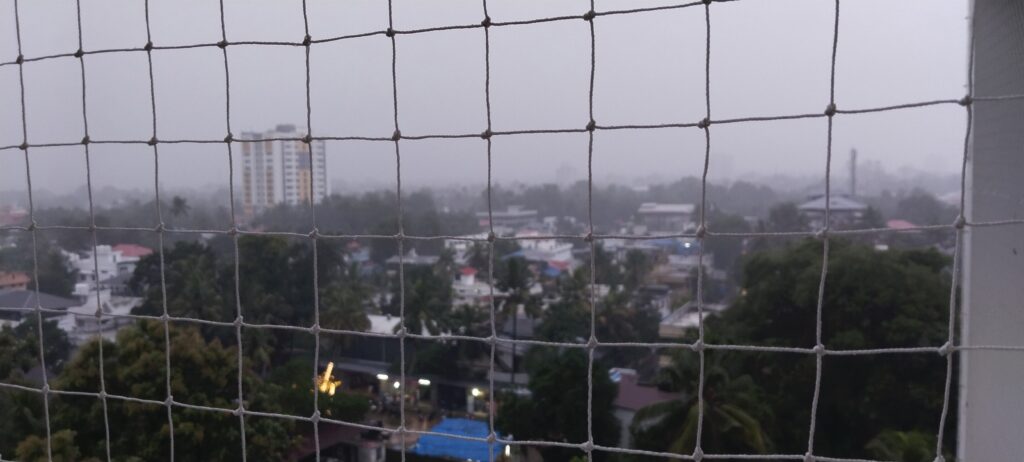
Specification
Sr. No Product Features Description
1. Usage for : Anti Balcony Net( Bird Control net )
2. Thickness of Filament
3. Appearances: Readily available in Black & white and Made to order for other colors.
4. Coverage: Square foot basis
5. Application: On SS (stainless steel) hooks or Rope
6. Corrosive: Chemically inert
7. External Effects: None
8. Mesh Size: Mesh size of 25, 30MM
9. Guarantee after application: 5 Year Net warranty
10. Temperature: Safe At 180 Degrees
Softening Point 120 Degrees
Melting Point 220 Degrees
11. Water: Resistant
12. Sunlight: U V Stabilized
13. Air: No effect, The mesh size allows easy flow of wind
14. Snow: No effect
15. Flammable: Yes
16. Shape of Mesh: Square
17. Dust Hazard: Easy to clean
18. Vapor Hazard: None
19. Breaking strength of Yarn: 21.08kg
Anti Bird Net
Anti-bird net is a type of netting material that is designed to prevent birds from accessing certain areas or objects. It is often made of lightweight and durable materials such as polyethylene, nylon or polypropylene, and is commonly used to protect crops, gardens, and buildings from birds.

An anti-pigeon net is a type of mesh or netting that is installed over areas where pigeons tend to gather, such as balconies, rooftops, and other outdoor spaces. The netting is designed to prevent pigeons from landing or roosting in these areas, which can cause damage to buildings and pose a health hazard due to their droppings.
Anti-pigeon nets come in various shapes, sizes, and materials, including plastic, nylon, and metal. They can be customized to fit the specific needs of a particular building or location. In addition to their primary function of keeping pigeons away, anti-pigeon nets also have the added benefit of being an environmentally friendly and humane solution.
Installing an anti-pigeon net typically requires professional assistance, as it involves careful planning, measurement, and installation to ensure that the netting is secure and effective. Regular maintenance is also important to keep the netting in good condition and prevent any damage caused by weather or other factors.


An anti-window net for birds is a type of mesh or netting that is installed over windows to prevent birds from flying into them. Window collisions are a major cause of bird mortality, and installing an anti-window net can help reduce the number of bird strikes.
The netting should be installed on the exterior of the window, at least 2 inches away from the glass surface to allow birds to see and avoid the net. The mesh size should be small enough to prevent birds from getting caught or tangled in it, but large enough to allow for proper air circulation.
Some anti-window nets are made of UV-resistant material to prevent degradation from sunlight exposure, while others are made of black or dark-colored netting to reduce reflection and glare. It is important to regularly inspect and maintain the netting to ensure that it remains secure and effective.
In addition to anti-window nets, there are other measures that can be taken to prevent bird collisions, such as installing decals or patterns on windows to make them more visible to birds, or using window film that reflects ultraviolet light, which is visible to birds but not to humans.
Bird proofing nets are a type of netting used to prevent birds from roosting or nesting in certain areas. These nets are typically made of a durable and lightweight material like nylon or polyethylene, and they are designed to be installed over openings or spaces where birds might try to enter.
Bird proofing nets are commonly used in commercial settings like warehouses, factories, and parking garages, where birds can cause damage to property, create a health hazard, or be a nuisance to customers or employees. They can also be used in residential settings like balconies, gardens, and roofs to keep birds away from plants, furniture, and other items.
When installing a bird proofing net, it’s important to choose the right size and material for the job. The net should be large enough to cover the entire area, with enough extra material to wrap around the edges and secure it in place. It should also be made of a material that is strong enough to withstand bird activity, but also lightweight enough to be easily installed.
In addition to bird proofing nets, there are other bird control methods that can be used, including spikes, wires, and sound deterrents. The choice of method will depend on the specific situation, the type of birds involved, and the desired outcome.

